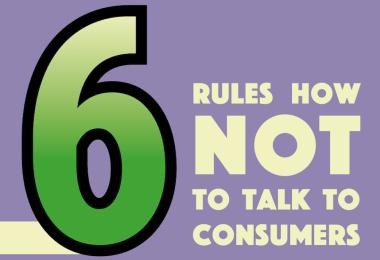Around 2009, as newspapers began to decline, the number of blogs exploded. Political pundits, insiders, cooks, mothers at home, and others discovered a willing audience, waiting to devour their insights. As blogs became more popular, businesses began to see them as a way to give consumers the inside view of how their businesses operated. Jordan Winery was one of many that jumped into blogging.
Eight years later, the digital landscape is littered with defunct blogs, with final posts like “I’m sorry I haven’t been around lately, but I haven’t found the time to blog”.
Jordan, based in Sonoma in California, is not only still going strong, but that original blog has turned into something of a media empire – it’s widely acknowledged to be one of the most successful examples of social media use in the wine world, and now includes a video channel and a spin-off print magazine. And it was all because Lisa Mattson, the director of marketing and communications, and her team have implemented best-practice strategies of what’s now known as content marketing.
“We started talking about taking a new approach to storytelling at Jordan in late 2009 when I was hired,” says Mattson, adding that not only was content marketing generally in its infancy, but that it was unknown in wine. “When we were getting started, it was a blog; we were using it as a diary.”
The original concept, she says, was simply to tell web visitors what was happening at Jordan, from the cellars through to what the chef was doing. Jordan not only has a winery, but also a strong wine tourism and hospitality offering, and part of the estate is a conservation area, so there was a lot to communicate. Mattson says they have also matured in the way they tell their story.
The most important thing of all, she says, is that “you have to change your mindset about the product and realise it’s about them, not about us. It’s about your consumer, not about you”.
Have a plan
Many in the wine world, particularly in Europe, are averse to being too customer-centric, worried that this will lead to tailoring wines to reflect fashion, rather than terroir. But the best examples of content marketing offer a fully-fleshed, authentic view of a company and its products; indeed, the warmer and more real the product and people behind it, the easier it is to talk about.
The first and most important step on the content marketing journey is to write down a strategy and a plan. Who do you want to engage, and how are you going to reach them? Will you be creating a blog, using video, or a regular newsletter, or a combination of approaches? Are you talking to consumers, sommeliers, or other members of the trade?
“Because Jordan is very dynamic has a very food-focused hospitality programme and hosts consumer events, we have an avenue to provide value to the consumers.” For example, a video showing how to make French macaron cookies remains their most popular video on YouTube, having racked up more than 860,000 views.
If you’re a winery that makes 10,000 cases of wine and is only open by appointment, your content marketing could focus on your research into old vines, for example. Releasing information about this would be an ideal approach for the USA or the UK, where sommeliers looking to increase their knowledge act as major gatekeepers.
Separate audiences call for different strategies. Mattson says Jordan has two specific audiences for their blog – a consumer audience and a trade audience. “We’re spinning off a new blog this summer that’s food, drink, and travel focused, and keeping the geeky stuff at the Jordan blog.” The marketing team is apparently concerned that audience segments get bored with content that’s aimed at a different group. “We get a lot of new traffic, but they’re not subscribing, and we think it’s because they came in to watch the baking video and then there’s a blog about how the flood has affected the vineyard.”
Having decided on the strategy and audience, the next thing is to set up an editorial calendar. “You have to keep track of what you will be blogging about and talking about on social media each month. Google Calendar is great for tracking this.” The editorial calendar needs to schedule not just blog posts, but also whatever will be mentioned on social media over the coming month.
How often should you post? This is critical: if you post too rarely, your audience will forget about you, whereas if you post too often, you can annoy your readers. HubSpot’s research suggests that for companies with more than 10,001 followers, posting 13 to 60 times a month is optimal. For companies with fewer than 10,000 Facebook followers, the ideal figure is up to five posts a month. What matters with Instagram, according to Forbes, is consistency. Post at regular, predictable intervals.
As for blogging, HubSpot found that “the more blog posts companies published per month, the more traffic they saw on their website,” according to their report. “Companies that published over sixteen posts per month got almost three-and-a-half times more traffic than companies that published between zero and four monthly blog posts.”
Few wine companies have the time or resources for such high-octane output, but whatever you can manage, make consistency your goal, and ensure that every single post – regardless of whether it’s on Facebook, your website or on Twitter – is high quality.
Perhaps most importantly, someone has to be in charge of project managing it all. “Who is going to be responsible for it? How are you going to budget time for it every month?” asks Mattson.
The platform
Ten years ago, setting up a good website could cost thousands of dollars. Today, a powerful, fully built, and highly functional website can cost as little as $2,000.00 to $3,000.00, while teams of developers create attractive-looking themes based on the blogging platform WordPress that can be bought for as little as $75.00 and can be installed in under two hours. Mattson suggests looking for inexpensive developers in places as far-flung as India and Bulgaria on Upworthy.com, the global freelancer’s site. Upworthy takes care of the payment side, so you never have to worry that someone is going to take your money and run.
Mattson also strongly suggests investing in high-quality images, either by subscribing to libraries like Shutterstock, or buying a very good camera and learning how to use it. “It really pays for itself,” she says. “We typically use only one freelance photographer per year for our magazine; the rest of the imagery for the blog we shoot ourselves.” She adds that while she will sometimes use pictures taken by consumers, she will only share them if they’re beautiful, such as a professionally shot wedding held at Jordan.
Video is such a powerful medium that mainstream publishers like Vox.com and The Atlantic are prioritising the production of YouTube videos. “We made the decision to invest in video back when we started blogging in 2009, so it’s always been important to us,” says Mattson. She believes that video breaks through the clutter. “What we have been doing in the past is a combination of educational, added-value videos – why we compost, how to do things in the kitchen.” Once a year, Jordan produces an annual music video, “because people want to see you let your hair down.”
Video producers that gain more than 10,000 subscribers on YouTube get access to a staffer for advice. They said that consistency was important, so “we launched a series about Jordan Uncorked, where our assistant winemakers taste an older vintage of Jordan requested by the audience.” Another tip is to keep the videos short and subtitle them. “A lot of people don’t want the sound on, but they want to watch while they’re doing something.”
Where does the content come from?
Jordan’s marketing department currently has three people – Mattson, plus a marketing specialist in charge of project management, among other things, and a digital media coordinator who handles the day-to-day social media, as well as photo and video shooting and editing.
Even so, creating non-stop shareable content is a lot of work. But there’s also the question of where to get ideas from, day after day.
A good strategy, Mattson suggests, is simply to hire a journalist. Not only can they create the content, but they are likely to find things of interest that won’t have occurred to staff members who’ve become so used to the environment that they have become blind to what’s unique about it. “Have a journalist come in and really interview everybody and figure out the real story are, the true stories that are compelling that people don’t already know. Get all of that written down.”
Other forms of knowledge within the company can make valuable and entertaining content as well, particularly recipes.
Don’t, however, just post for the sake of having something going up on time. The digital world is now so crowded that not only will poor content not be read or shared, it may annoy your customers and discourage them from engaging. Not only that, but Google’s algorithms discriminate in favour of better quality material. Mattson says she spends a lot of time thinking up good, search-friendly headlines and introductory paragraphs, saying that it pays off through the quality of the people that it’s attracting.
The good thing about creating very high-quality content is that the content becomes evergreen – continually clicked on and shared for years, as in the case of Jordan’s French macaron video.
What’s the return?
Given that content marketing is time consuming and relentless, why do it? As Mattson says, monetising it is not the point. What’s the return on investment of a feature in the New York Times?
“It’s always been hard to tie sales to public relations, and content marketing and social media are no different,” she says. “It’s so fragmented with digital media, but we do get people saying, ‘Hey, I saw from your tweet that you still have magnums. I’d like to buy one.’”
The major benefit is that it builds a closer relationship to the consumer, as well as being a form of publicity. “There’s so much more competition, not just domestically, but globally. There is less media and fewer distributors, so this is your own platform. That’s incredible.”








